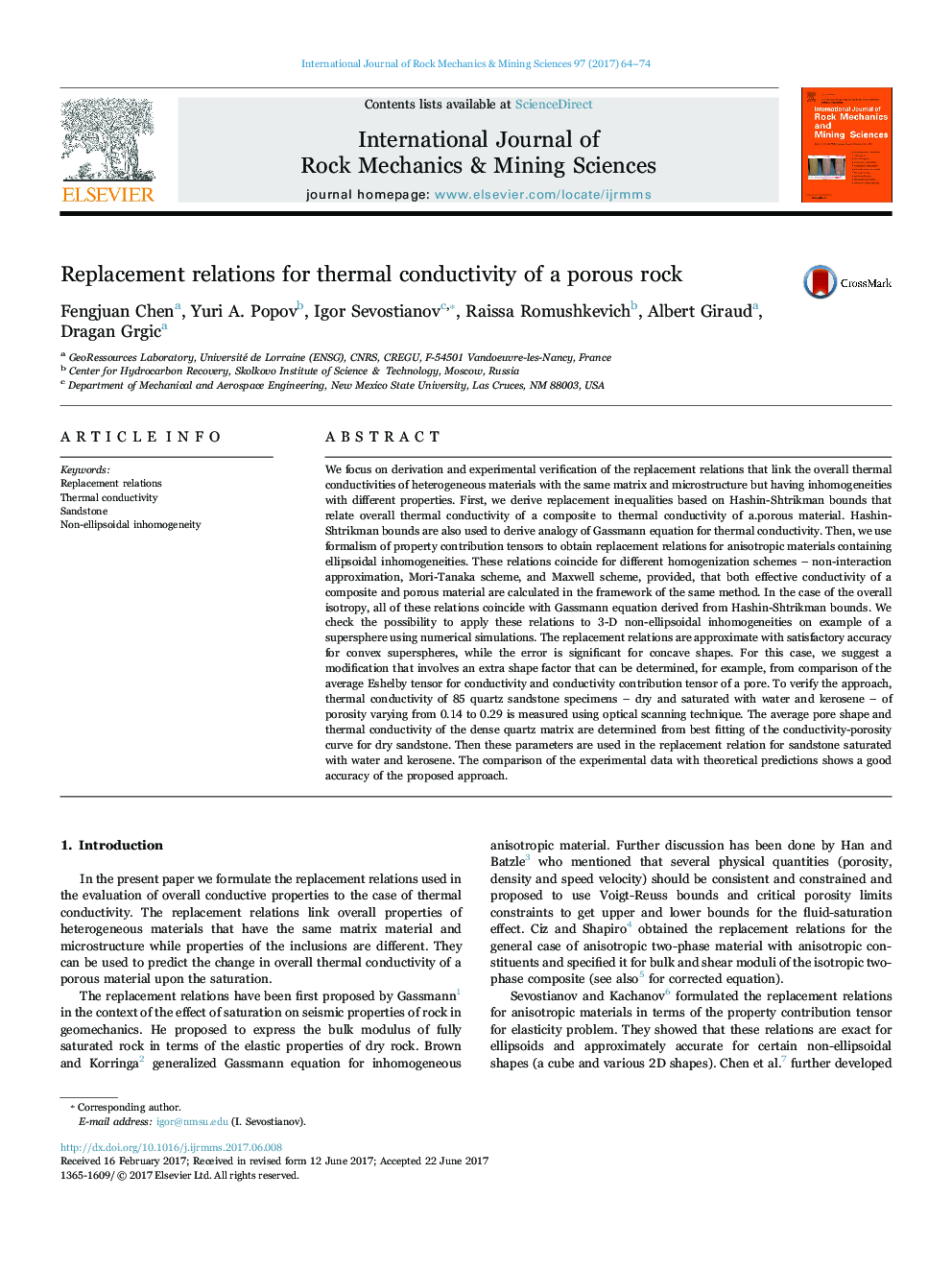| Article ID | Journal | Published Year | Pages | File Type |
|---|---|---|---|---|
| 5020168 | International Journal of Rock Mechanics and Mining Sciences | 2017 | 11 Pages |
Abstract
We focus on derivation and experimental verification of the replacement relations that link the overall thermal conductivities of heterogeneous materials with the same matrix and microstructure but having inhomogeneities with different properties. First, we derive replacement inequalities based on Hashin-Shtrikman bounds that relate overall thermal conductivity of a composite to thermal conductivity of a.porous material. Hashin-Shtrikman bounds are also used to derive analogy of Gassmann equation for thermal conductivity. Then, we use formalism of property contribution tensors to obtain replacement relations for anisotropic materials containing ellipsoidal inhomogeneities. These relations coincide for different homogenization schemes - non-interaction approximation, Mori-Tanaka scheme, and Maxwell scheme, provided, that both effective conductivity of a composite and porous material are calculated in the framework of the same method. In the case of the overall isotropy, all of these relations coincide with Gassmann equation derived from Hashin-Shtrikman bounds. We check the possibility to apply these relations to 3-D non-ellipsoidal inhomogeneities on example of a supersphere using numerical simulations. The replacement relations are approximate with satisfactory accuracy for convex superspheres, while the error is significant for concave shapes. For this case, we suggest a modification that involves an extra shape factor that can be determined, for example, from comparison of the average Eshelby tensor for conductivity and conductivity contribution tensor of a pore. To verify the approach, thermal conductivity of 85 quartz sandstone specimens - dry and saturated with water and kerosene - of porosity varying from 0.14 to 0.29 is measured using optical scanning technique. The average pore shape and thermal conductivity of the dense quartz matrix are determined from best fitting of the conductivity-porosity curve for dry sandstone. Then these parameters are used in the replacement relation for sandstone saturated with water and kerosene. The comparison of the experimental data with theoretical predictions shows a good accuracy of the proposed approach.
Keywords
Related Topics
Physical Sciences and Engineering
Earth and Planetary Sciences
Geotechnical Engineering and Engineering Geology
Authors
Fengjuan Chen, Yuri A. Popov, Igor Sevostianov, Raissa Romushkevich, Albert Giraud, Dragan Grgic,
